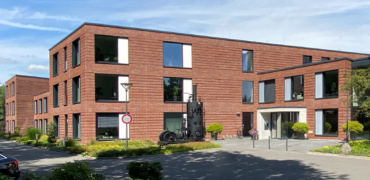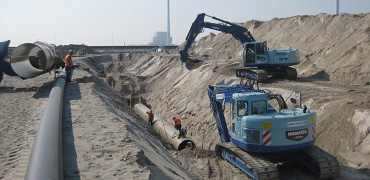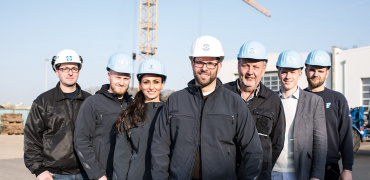HDD-Drilling 1830 m Barreiro Portugal
During the construction of a high pressure gas pipeline from the Portuguese gas supplier REN and the executive joint venture Criagas, Lena, Marpe, LMR Drilling GmbH received the contract to carry out two HDD drillings under the river Tejo near Lisbon. The two drillings were carried out parallel and over a length of 1830 m each, for the installation of a cable protection pipe DN 150 and a gas pipe DN 250.

 13.04.2010
13.04.2010
The entry points were close to an industrial area of the town Lavradio approx. 8,5 km southeast of Lisbon. LMR Drilling GmbH used the modular 250/120.2 rig with a maximum pulling force of 2500 kN and a maximum torque of 1200 kNm.
To ensure the mud return flow as long as possible to the entry point while pilot drilling, it was essential to minimize the annulus pressure. To guarantee this a 9 5/8’’ mud motor and rotary bit were used in the sandy soil.

The drilling rig arrived at site on the 15th of September 2009 and the works started with set-up of the drilling equipment. During this time a cable for the reference measurement was moved at the surface along the centre line. This work could be done only at low tide or from a boat because 92 % of the centre line was lying in the water.

The first pilot drilling started on the 19th of September. From the 22nd of September on the drilling process was carried out in double shift, 24hrs per day. In addition to the standard measured data such as inclination and azimuth the annulus pressure was recorded by the steering tool.
After reaching a bore length of approx. 1200 m, a 13 3/8’’ casing has been installed at the entry side at a length of 50 m to stabilize the further rise pushing forces. The installed Casing protected the drill string against too high pressure forces. The pilot drilling was finished on the 24th of September during the night shift. The pilot drilling assembly consisting of a drill bit, a mud motor and a non magnetic drill pipe with the in lined steering tool was dismantled from the drill string.

As there was only a small exit area and some parts of it were laying in a swampy terrain the pipe string was pre-fabricated in 3 parts with lengths of approx. 600 m. The cable protection pipe DN 150 should then be welded successively during the pull back.

Due to the exit angle of 17° and the allowable bending radii that had to be adhered to, an overbend with a height of approx. 5,80 m was necessary. To realize this overbend 4 mobile cranes were used.
After connecting a reaming tool and a swivel to the drill string at the exit site the drill string was connected to the first section of the cable protection pipe. The pull back of the product pipe started in the late morning of the 25th of September.

After two stops for welding of the single pipe sections the pull back was successfully completed after 15 ½ hrs. The maximum pulling force added up to 460 kN.
After disconnecting the rig from the pulled pipe string, the rig was re-positioned for the second crossing. For this purpose the rig had been cut off from the dead-man and turned into the direction of the second centerline by using a tracked excavator.
Due to damages at the reference cable by dragnets of local fishermen during the first pilot drilling, the cable was allocated inside the cable protection pipe.
After re-assembling the BHA the second pilot drilling could be started on the 26th of September during the night shift. In the morning of the 30th of September the second pilot drilling was completed and the preparations for the pull back of the second product pipe started.
The pull back of the product pipe DN 250 started on the 1st of October. After 14 hrs the pull back was successfully completed. The maximum pulling force added up to 470 kN.



